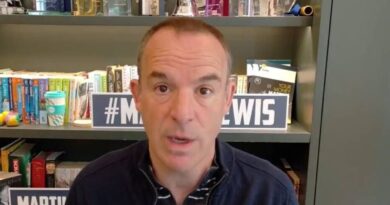What a slowdown in international travel could mean for America’s tourist hubs
Sault Ste. Marie in Michigan is a small city with a thriving economy. That’s because visitors from its larger northern sister city in Ontario, Canada, keep the border town’s economy humming.
Situated on opposite sides of the St. Marys River, the U.S. and Canadian counterparts are connected by the Sault Ste. Marie International Bridge, over which thousands of vehicles pass each month.
“It’s so intertwined,” said Linda Hoath, executive director of the Sault Area Convention & Visitors Bureau, who noted that many people have family members on both sides of the U.S.-Canada border. “There’s no separation between the two communities,” she said.
But with the U.S. trade war unleashed against Canada in recent months — along with reports of detentions of travelers at the Canadian border by U.S. immigration authorities and threats of annexation by President Trump, the chasm between the two neighbors has grown, as fewer Canadians make the trip south to the United States.
According to Sault Ste. Marie’s International Bridge Administration, the passenger car traffic in April was down 44% compared with last year. And while the waning bridge traffic may not mean much from the view of Canada’s second-largest province and most popular destination, to the historic Michigan town it certainly does.
“They have 70,000 people,” Hoath said. “And if they’re not coming over and buying in our stores, then it affects us much more.”
Slowdown in travel to the U.S.
Sault Ste. Marie is not alone in its tourism concerns. Though travel this Memorial Day weekend is expected to be the highest on record, one group has been noticeably absent at U.S. travel checkpoints in recent months: international travelers.
International travel to the U.S. fell 14% in March compared with the same period last year, according to the the U.S. Travel Association. Perhaps unsurprisingly, the biggest dip in travel, 20.2%, was from Canada, according to research from Tourism Economics, a unit of investment advisory firm Oxford Economics.
Earlier this year, former Prime Minister Trudeau urged Canadians to refrain from vacationing in the U.S., after President Trump slapped a 25% tariff on Canadian goods. The drop-off in Canadian travel is a notable shift, given that Canada was the biggest source of inbound travel to the U.S. last year, according to the World Travel & Tourism Council.
As to what’s behind the overall slowdown in international travel to the U.S., experts point to the Trump administration’s stricter immigration policies, the strength of the U.S. dollar and long visa wait times. Aggressive tariff policies have also left a bad taste in many travelers’ mouths.
“Shifting sentiment and perceptions of the U.S. are expected to continue to weigh heavily on travel demand,” said Aran Ryan, director of industry studies at Tourism Economics.
As of April, flight bookings to the U.S. for the May–July travel window are 10.8% lower than they were the same period last year, according to the research firm. It projects an 8.7% decline in international arrivals in 2025.
Economic Impact
The slowdown in international travel threatens to destabilize America’s tourism industry which plays a vital role in supporting the nation’s economy.
“International inbound travel is hugely important from an economic standpoint — people that come to the U.S. and visit spend on average $4,000 per visit,” a spokesperson from the U.S. Travel Association, told CBS MoneyWatch.
Those dollars may already be slipping away: The World Travel & Tourism Council projects that spending by international visitors to the U.S. will drop to $169 billion, or 7%, this year, from $181 billion in 2024. That’s a 22.5% decrease from peak tourist spending of $217 billion in 2019, before the pandemic.
Fewer international travelers could also take a toll on the workforce that props up America’s tourism industry: Nearly 10% of American jobs are tied to the travel industry, according to the World Travel & Tourism Council.
An ongoing decline in international travel to the U.S. could result in a loss of over 230,000 jobs — with the dining and lodging industries expected to be the most hard hit, according to a recent analysis from the economic research firm IMPLAN.
“It’s not going to devastate the U.S. economy in terms of GDP, but it is very significant in terms of employment,” Jenny Thorvaldson, IMPLAN’s chief economist and data officer, told CBS MoneyWatch.
Hoath, who runs the visitor center in Sault Ste. Marie, said she is already worried about what those losses could mean for her community.
“When we’re looking at the bridge and it’s packed, people have to get their employees together,” she said. “But if it’s not so busy, what happens to your employees? They’re not making the money. Some people will be laid off.”
Hotel bookings in the city of 14,000 are already down 77% year to date, according to the Sault Area Convention & Visitors Bureau.
Shifting focus to domestic travelers
As international tourism dampens, local communities like Flagstaff, Arizona, are rerouting their attention to domestic travelers.
Despite the city’s wide international appeal, the travel season has gotten off to a slow start. Flagstaff has seen a 15% to 20% drop in international tourists year over year, according to Trace Ward, director of Flagstaff’s Convention and Visitors Bureau.
While he hopes that decline will only be temporary, Ward is looking for ways to bring in more American tourists. One strategy he has in mind is adding more direct flights to the area and possibly attracting a new airline. The city is also promoting its Lowell Observatory‘s new Astronomy Discovery Center, which offers visitors a glimpse of the cosmos.
“I look forward to the excitement of the international traveler coming back full steam, but until then, we’re gonna sell to whoever is interested in coming here,” Ward said.
Hoath, likewise, has shifted her focus toward attracting visitors from within the States, and has decided to halt spending on any advertising in Canada.
“When you don’t have a ton of funds, you’ve got to put them where you know they have a better possibility of working,” she said.





